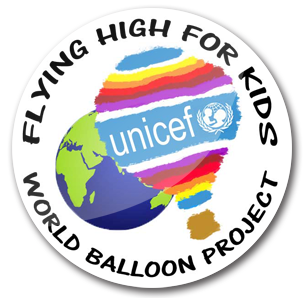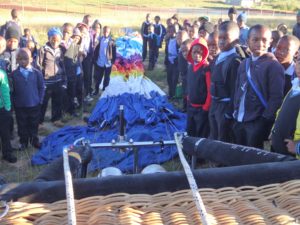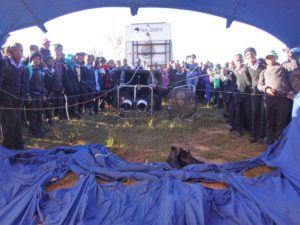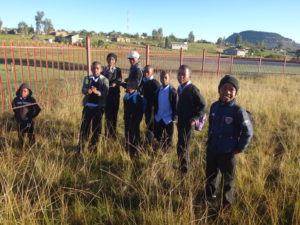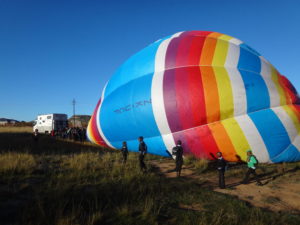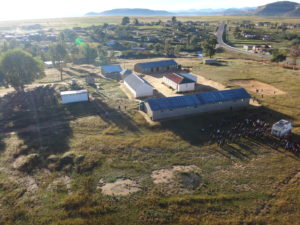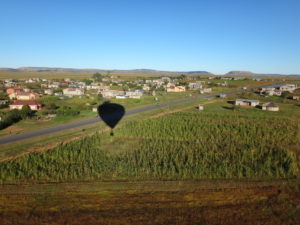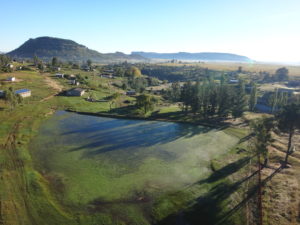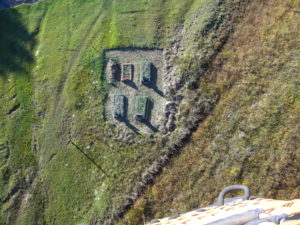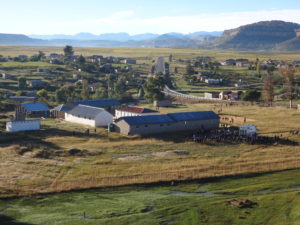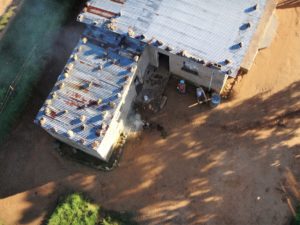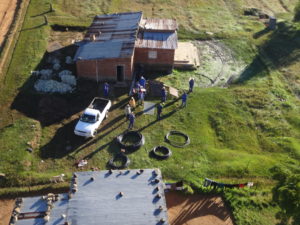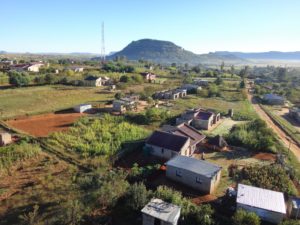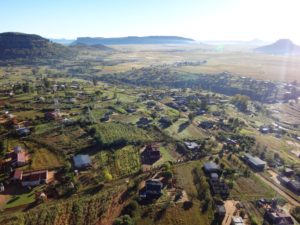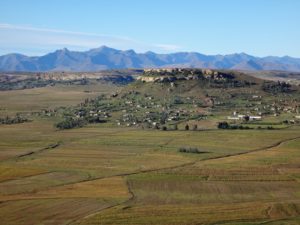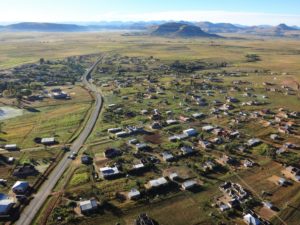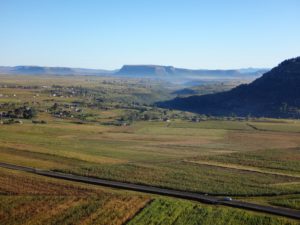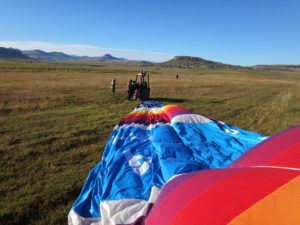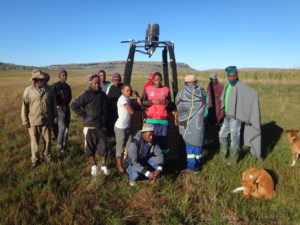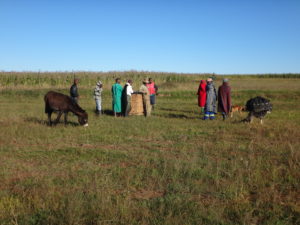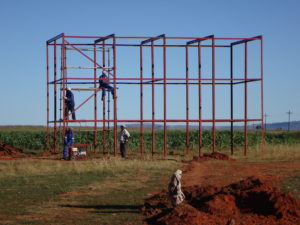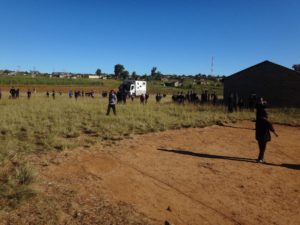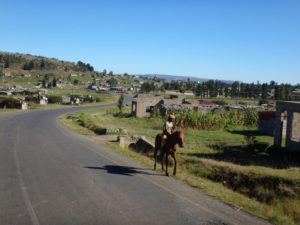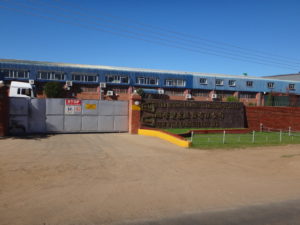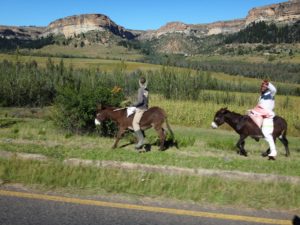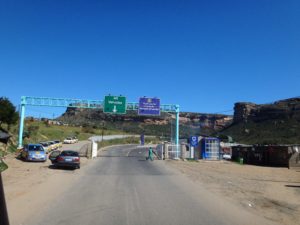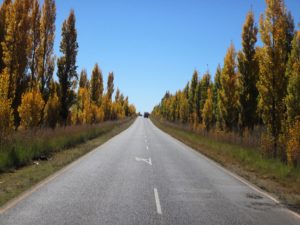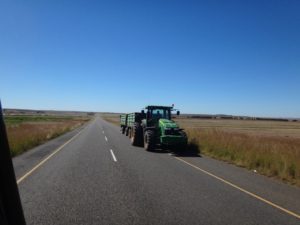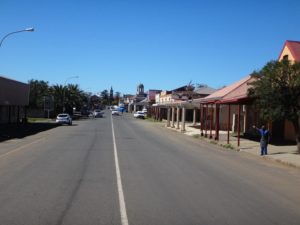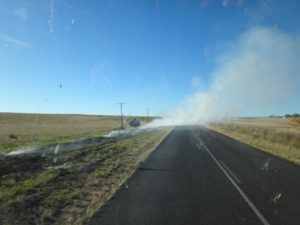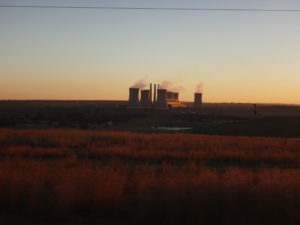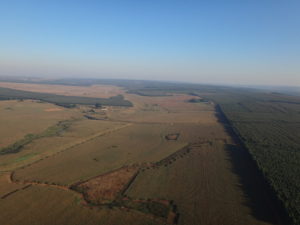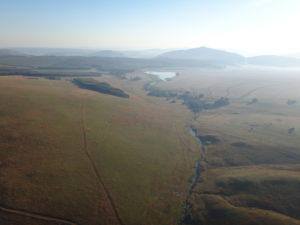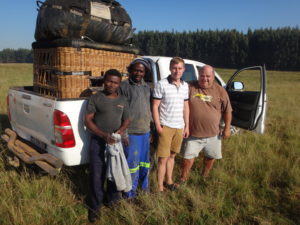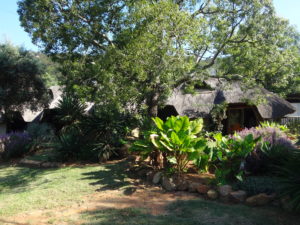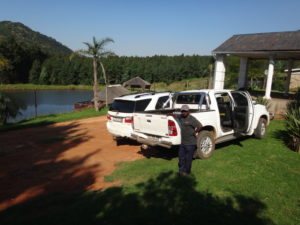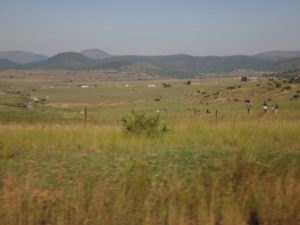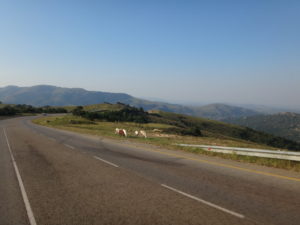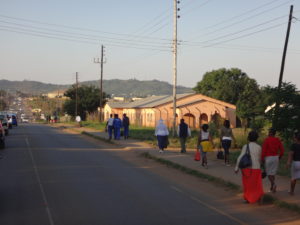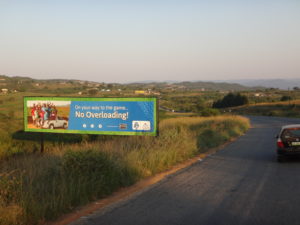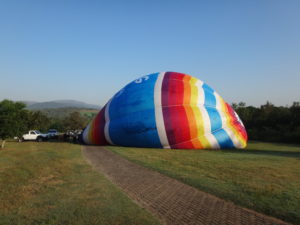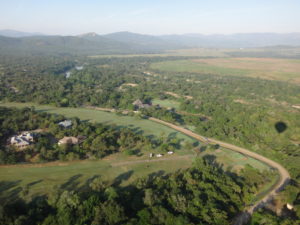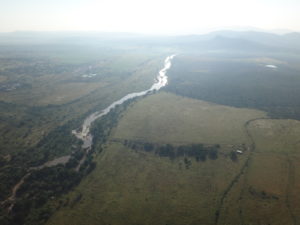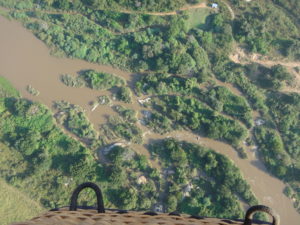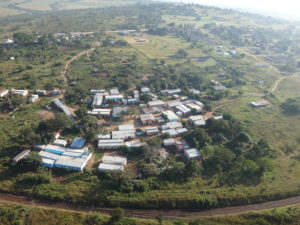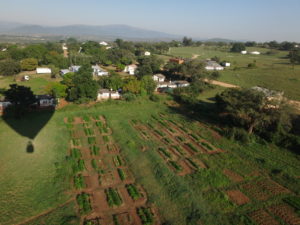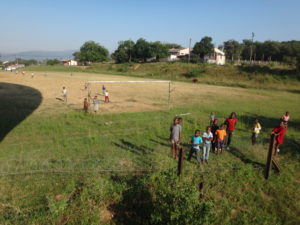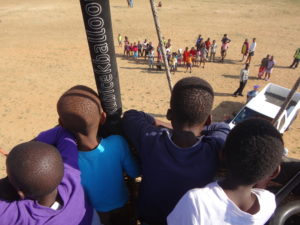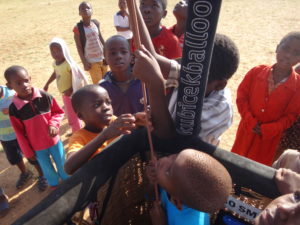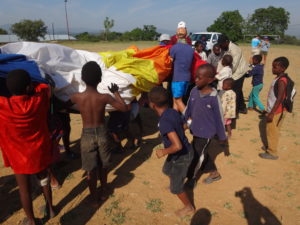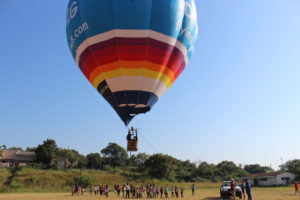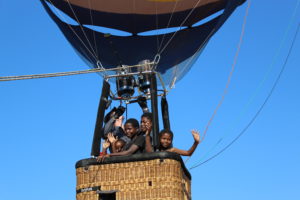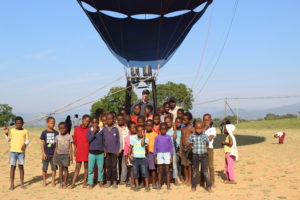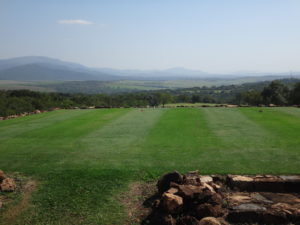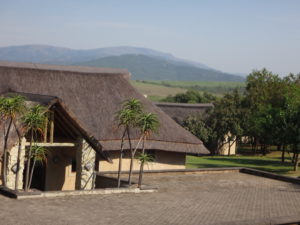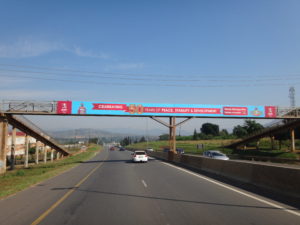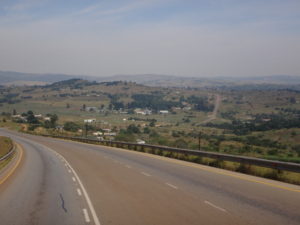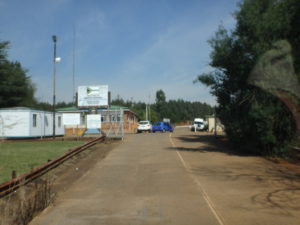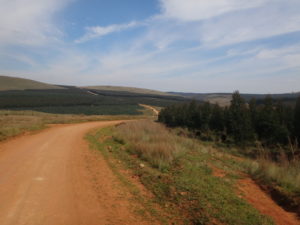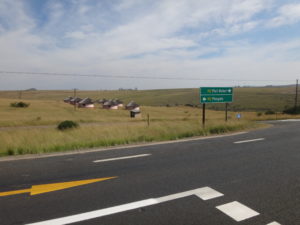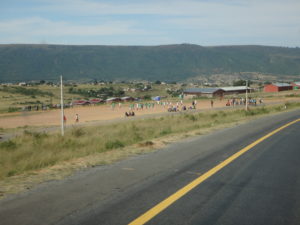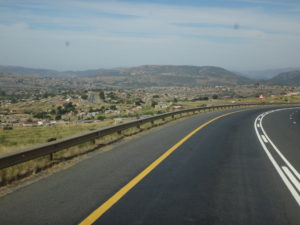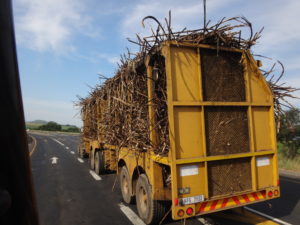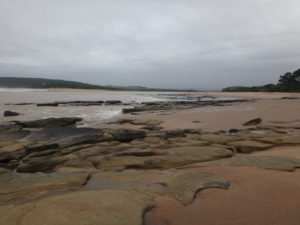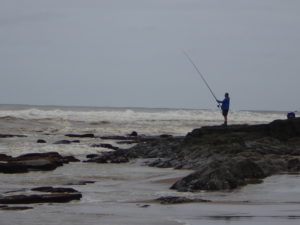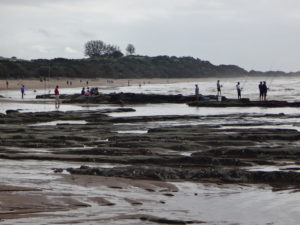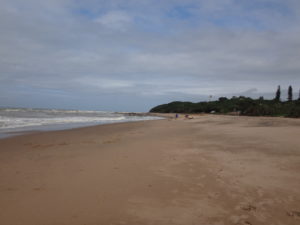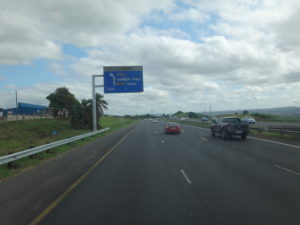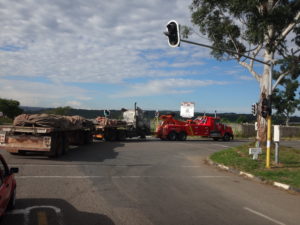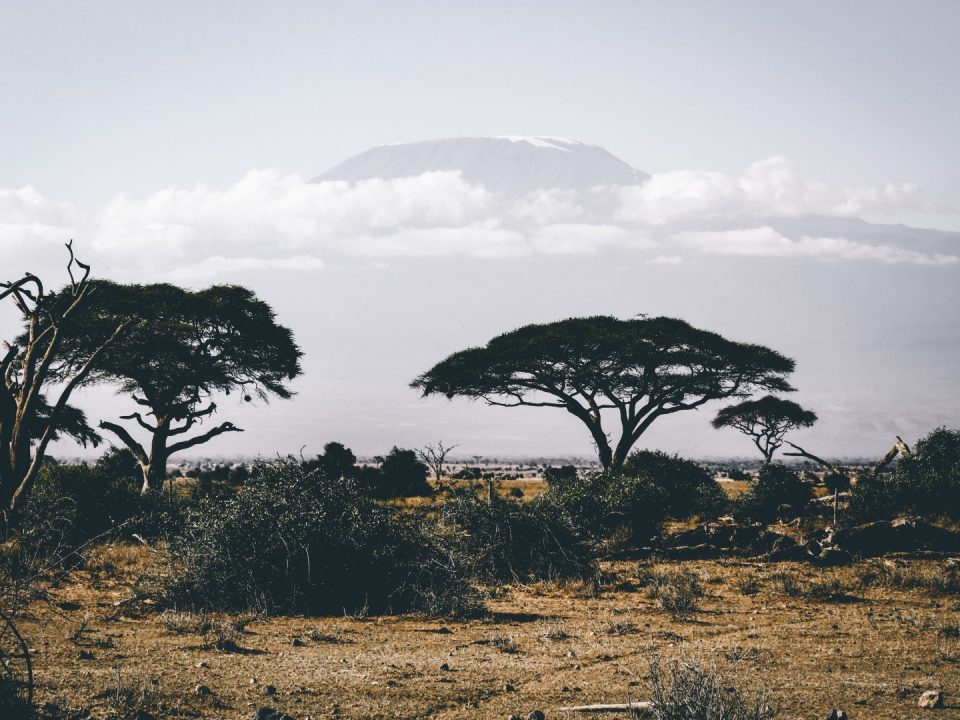Flying in Lesotho, South Africa and Swaziland: 23 April to 30 April 2018
South Africa and Lesotho. 17 April to 23 April 2018
April 17, 2018
The End Of Africa: 30 April to 8 May 2018
April 30, 2018I was up at 6 the next morning to get ready for the flight from Corn Exchange School, (Corn Exchange is the name of the town). The weather was perfect, cool and crisp.
I unloaded the balloon. A few kids turned up as I was setting up. It was a couple of hours before school started, but they had been informed the day before the flight.
Quite a crowd gathered as the balloon inflated. There weren’t many adults around, but the kids were very good to manage. They were very excited as the balloon grew larger and larger as it filled with cold air.
Everyone jumped back as I turned the burners on. The balloon stood up. Some of the cooking ladies at the school came running out, yelling with glee. Everyone marvelled as the balloon took to the sky.
Lesotho is a beautiful place, with mountains and valleys covering most of the country. Over 80% of the country lies above 1800m. It’s completely landlocked, surrounded by South Africa. It is also a small country, only 30,000sqkm, with a population of 2 million people.
I flew across Corn Exchange, waving to the villagers, and enjoying the view. I landed a couple of kilometres away on a farm. I didn’t want to fly too far as I only had permission to fly from the village.
Local men started appearing from every direction, including the Village Chief. He was well versed in English, and young, only 28 years old. His Parents had died, and his older brothers were elsewhere, mainly working in mines in South Africa.
The guys were very helpful, and we packed the balloon quickly. The chief said that he would keep the balloon safe as I went to get the truck, (not that I thought it was under threat). A few of the guys guided me back to where the truck was parked. It was a nice stroll through the fields.
I drove back with four of the strongest students from the school, (which the Principal had given me) to help load the balloon. The field was a bit soft as it had rained quite a bit the week before. Luckily I had four-wheel drive.
The balloon was loaded in no time at all, and I headed back to the school.
I had a good chat with the principal. She said that a lot of the women in the village were employed in the textile factories in Maputsoe. Chinese and USA companies, (such as Levi Strauss, Gap and Timberland) manufacture there and provide crucial income for the economy. The men struggle more to find jobs, mainly agricultural based.
Lesotho has one of the highest rates of HIV in Africa, but she said that this was improving with the help of education and modern medicines.
The school was well equipped and looked after, (much better than many schools I had visited). Primary education is free, (the government gives around 20 Rand, ($US1.60) per child per year). Schools still struggle to pay for infrastructure and maintenance, and many have been helped by the likes of UNICEF and World Vision, (World Vision had paid for the fencing around the School and with the help of UNICEF, had put in latrines).
Secondary education is a problem for many families as they need to pay 2000 Rand a year, (US$160). A number of students stop after primary school, or early into their secondary school years
I was surprised to see TV’s in a number of the classrooms. The principal was saying that she would also like a couple of computers for the kids to use, (If anyone reading can help with this, please let me know).
I headed through the town of Maputsoe, past the textile factories, and followed the main road to Butha Buthe, and on to the border. The roads are surprisingly good, travelling through hills and villages along the way. The Chinese have re-built many of the roads.
The border crossing was easy, taking only around 15mins for both sides.
On the South African side, the area is much less densely populated. The driving is quite easy, across plains and rolling hills. It feels like you’re constantly going up and down hills for hundreds of kilometres. There are some huge planttions of crops, such as maize and butternuts
I stopped in the town of Vrede for lunch. It looked very much like a colonial town. It is an agricultural hub, with huge maize silos on the edge of the town. I found a really nice restaurant at the end of the main street to have lunch at.
I carried on to Piet Retief and Emahlathini, arriving at Emahlatini Guest Lodge, owned by Pieter and his Wife, after dark. Pieter has been helping me with gaining permission to fly in Swaziland, and is a friend of a friend.
The last 20kms or so was on a forestry road. Emahlathini is right by the Swaziland border, (now called the Kingdom of eSwatini).
The guest lodge is nestled in a beautiful valley next to a small dam. They have monkeys and lots of different birds around.
We had a brai, (bbq) that evening and had an enjoyable evening with him and his family. Nice after a 500km drive.
We headed to Swaziland the next day for a meeting with the Swaziland Civil Aviation Authority. The small border crossing is just down the road. You go from a terrible, potholed road on the South African side, to a perfect highway on the Swaziland side. Like Lesotho, Swaziland is mountainous.
We met with the Head Inspector at the CAA, then met with the Director General. Originally they had asked me to pay 17,000 Rand, (US$1360) for the flight permission, but after understanding the project a bit better, they gave the permission for free.
I was briefed by the various departments about flying in Swaziland, and they went through all my documents with a fine toothed comb. All in all, they were very helpful and thorough. It was interesting to find out about general aviation in the country. They would like to develop recreational aviation more.
After a few hours at the CAA, Pieter had a couple of errands to do, before we went to the take off site at Nkonyeni Golf Estate. The golf course is very well kept. We met a friend of Pieter’s, Dawie, who is the Head Groundsperson there. We decided on a take-off site on the fairway of the first hole.
We had late lunch at the club house, and then headed back to Pieter’s place, a couple of hours drive away. We just got through the border before it closed at 6pm. We had another brai that night.
We decided to do a flight, so the next morning we were up early. Flight conditions were looking a little challenging, with quite a strong wind straight into Swaziland. I was careful with my take off site as there are a lot of hills and forest in the area, so I needed to make sure I was going to land in South Africa.
We managed to find a school’s football field to take off from. One of Pieter’s workers, (and Dawie’s nephew) Steven, flew with me. We waved to the kids in the school as we took off.
Sure enough, the wind was a good speed, 40km/h only a couple of hundred metres above the ground.
It was beautiful to see the forest and hills around, though I was quite pre-occupied with lining up a small valley, which was the last place to land before Swaziland. We came in just above the trees quite quickly. I descended after the trees and we landed at just a few km/h. I was happy to be there.
Pieter had kept up, and with the help of a couple of his workers, we packed the balloon and headed home.
The rest of the day was spent in a bit of a panic. I found that my passport was lost. We re-traced our steps from the night before after crossing back into South Africa, but it had vanished from the face of the earth. I was completely mystified. I called the New Zealand Embassy to report it, but they said to contact South Africa Home Affairs. I went into Piet Retief and waited in line for a couple of hours there, only to be told that there was nothing that they could do. I visited that police station down the road to get an affidavit to say that it was missing.
Luckily I have a second valid passport and I could travel on that. The only problem was that my visa was in the lost one. I had a balloon flight planned for the next day in Swaziland, and I was worried that I would be stuck in Swaziland and not able to get back into South Africa.
I decided to chance it and went to the border in the afternoon. I found the immigration officer who had processed me the day earlier. He recognised me and was very understanding. He let me exit and said it would be no problem to return into South Africa at that border crossing. It was quite a relief.
I drove to the Nkonyeni Golf Estate. Just before my destination, I was stopped at a police check point. The officer was very nice and I told him my plans of flying the next day.
I caught up with Dawie when I arrived at Nkonyeni. After closely studying the weather, I had all ready decided on a flight plan a few days before. The plan was to take off from the golf course and fly to a school in Sidvokodvo, around 10kms away. It was a nice challenge to myself.
Dawie and I went to the Sidvokodvo Police Station to inform them. Funnily enough, it was the same police officer I had spoken to on the road. He was just finishing his shift. He called a number of people for us, including the school.
We went to the launch site the next morning. Conditions were perfect. I agreed to take the two children of the golf course owner for a flight. I had to wait for the CAA to arrive as they wanted to check everything out and hand me the flight permission letter.
The balloon was inflated when the two of them arrived. I was handed the letter and I was good to go. You definitely can’t fault them for being safety conscious.
We flew across the golf course and made a line straight for the school. There are mountains all around and the landscape is very green. They had had good rainfall this year. A number of villages are dotted about, and a river runs through the wide valley.
I came in low over Sidvokodvo to see what the wind was doing. There were many excited people on the ground yelling up at us. Conditions were perfect, and I managed to land right at the school. Dawie, our crew, the CAA, and the police were all waiting for me there.
It was the school holidays, but as most people knew about the balloon coming, quite a crowd of kids had also gathered. A rope was tied to the vehicle and we managed to fly all the kids and most of the adults on a tether. There were many excited and inquisitive kids. It is such a pleasure to bring happiness to so many.
The balloon was going to be shipped to Uruguay after, so I emptied the tanks of fuel, (the little that was left) and packed the balloon. The kids all got involved with the packing too.
We returned to the Nkonyeni. Dawie took me around the golf course. He explained how much it took to keep the course in such good condition. Quite a task, especially with so much flora and fauna around.
The rest of the afternoon was spent catching up on various things. It had been a very busy week and it was nice to take it easy. Nkonyeni had allowed me to stay in one of their very nice chalets for a couple of nights, so it was very good of them.
I left for South Africa the next morning. I had no problems getting through the border with my second passport. Just over the border, I met Steven. Coincidentally, he was going past. After a quick chat, we both went our separate ways.
I took National Highway 2 towards Durban, 600kms away. I decided to stop in the fishing village of Tugela Mouth, arriving there just on dark. It was a long weekend in South Africa, so I took the last available spot at the small camping round. A storm was passing through, which brought a lot of wind with it, but not much rain.
After fish and chips for dinner, it was an early night to bed.
It was very nice to walk on the beach the next morning. The last time I had seen such open water during the project was in Alexandria, Egypt.
A number of people were out fishing and enjoying the morning. It’s a very picturesque setting with the combination of the hills, forest, light house, sea and river.
A number of baptisms were taking place. I had never seen anyone being baptised in the surf before. As a wave would come in, the priest would dunk them into it.
I left for Pietermaritzburg, north-west of Durban, at around Midday. The road was very good, a 2-4 lane motorway. Some of it is a toll road.
I met up with Robin at his company, Motor Brake and Clutch. He is the cousin of a friend of mine in Dubai and was going to do some work on my truck. We left the truck there and went to his family home on the other side of the city. We had a very enjoyable dinner and evening, chatting late into the night.
We headed into his work early the next day. On arrival, I was straight into organising shipping and the many things the truck needed over the course of the week before it was to be shipped. I took one of Robin’s work vehicles into Durban to go to the shipping agent. It is an hour’s drive away. While I was there, I also picked up some truck brake drums from a couple of companies. It was a good way to explore Durban a bit.
The rest of the afternoon was spent at the workshop sorting the truck out, before going back to Robin’s place for the night. Their hospitality has been amazing.
